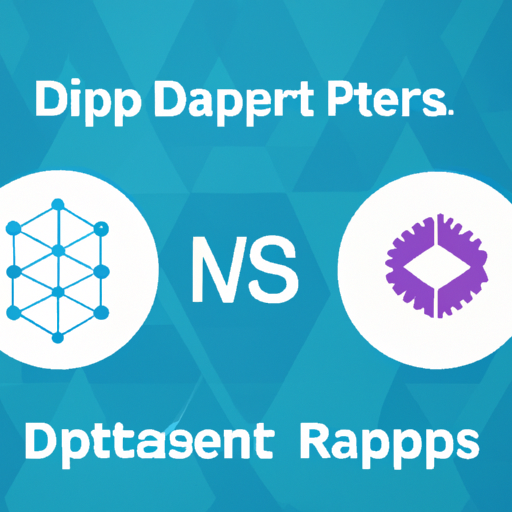Decentralized Applications and Protocols: A Comparison
In recent years, blockchain technology has enabled the development of innovative decentralized systems, such as decentralized applications (DApps) and protocols. Although both are essential components of the decentralized ecosystem, they have different functions and roles. This article provides an overview of DApps and protocols, exploring the distinctions between them and their importance in the world of web 3.0 examples, web 1.0 vs 2.0 vs 3.0, and metaverse vs web 3.0.
DApps are decentralized applications that are built on top of a blockchain network. They are autonomous and open-source, meaning that anyone can access their code and modify it. DApps are often used for cryptocurrency transactions and decentralized finance (DeFi).
Protocols, on the other hand, are the underlying rules and standards that govern the functioning of a blockchain network. They are designed to ensure the security and reliability of the network. Protocols are also responsible for verifying transactions and maintaining the consensus mechanism of the network.
It is clear that DApps and protocols have different roles and functions. DApps are the applications that are built on top of the blockchain network, while protocols are the underlying rules and standards that govern the network. Together, they form the foundation of the decentralized world and enable the development of web 3.0 technology, web 2.0 vs 3.0, and define web 3.0.
Understanding DApps
Decentralized applications, or DApps, are software programs that run on a network of computers rather than a centralized server. They use blockchain technology to ensure immutability, security, and transparency.
Similar to traditional applications, DApps have both front-end and back-end components. The front-end allows users to interact with the application, while the back-end, also known as the smart contract, is deployed on the blockchain and executes the application’s logic and securely manages data.
What sets DApps apart is their decentralized structure. This means that they are not dependent on a single organization or central authority, as the blockchain network distributes transactions and data, making them unchangeable and censorship-resistant.
Examples of DApps
Web 3.0 is a new generation of internet technology and it is bringing us decentralized applications (DApps). To give you an idea of what this technology is capable of, here are some examples of DApps: blockchain-based games, peer-to-peer marketplaces, decentralized finance (DeFi) protocols, and more. It is important to understand the differences between web 1.0, web 2.0, and web 3.0, as well as the differences between web 3.0 and metaverse, in order to understand the potential of this technology.
Protocols in the decentralized world
In the world of blockchain and decentralized technologies, protocols are the underlying sets of rules and standards that define how the network operates. They provide the basis for DApps to communicate and function well within the ecosystem. Protocols determine the rules for data validation, consensus processes, and the network’s node-to-node communication, making sure that everyone follows the same rules and can trust the data exchanged within the system.
The concept of web 3.0 is closely related to protocols. Web 3.0 examples include the metaverse and blockchain, and there are clear differences between web 1.0, web 2.0, and web 3.0. Web 3.0 technology is defined as the third generation of internet technology, which is more secure and reliable than web 1.0 and web 2.0. In comparison, blockchain and web 3.0 have a few similarities and differences.
Types of protocols
Web 1.0, 2.0, and 3.0 are all different types of protocols. Web 1.0 was the first iteration of the web, while Web 2.0 was the introduction of social media and other interactive elements. Web 3.0, also known as the Metaverse, is a technology that combines the power of blockchain and artificial intelligence. It is used to create an immersive virtual world. When comparing Web 1.0 vs. 2.0 vs. 3.0, it is important to note that Web 3.0 is the most advanced version. When looking at blockchain vs. Web 3.0, the former is used as a decentralized database, while the latter is used to create a virtual world. Understanding what is Web 3.0 technology is key to understanding the future of the web.
DApps vs. protocols
DApps are user-facing applications that provide a variety of services and functionalities within the decentralized ecosystem. On the other hand, protocols are the rules and standards that govern the entire decentralized network and facilitate seamless interactions between DApps.
In conclusion, DApps and protocols are key components of the web 3.0 revolution, transforming various sectors and promoting innovation in the blockchain space.
Collect this article as an NFT to preserve this moment in history and demonstrate your support for independent journalism in the crypto space.
Subscribe to our email newsletter to get the latest posts delivered right to your email.


Comments